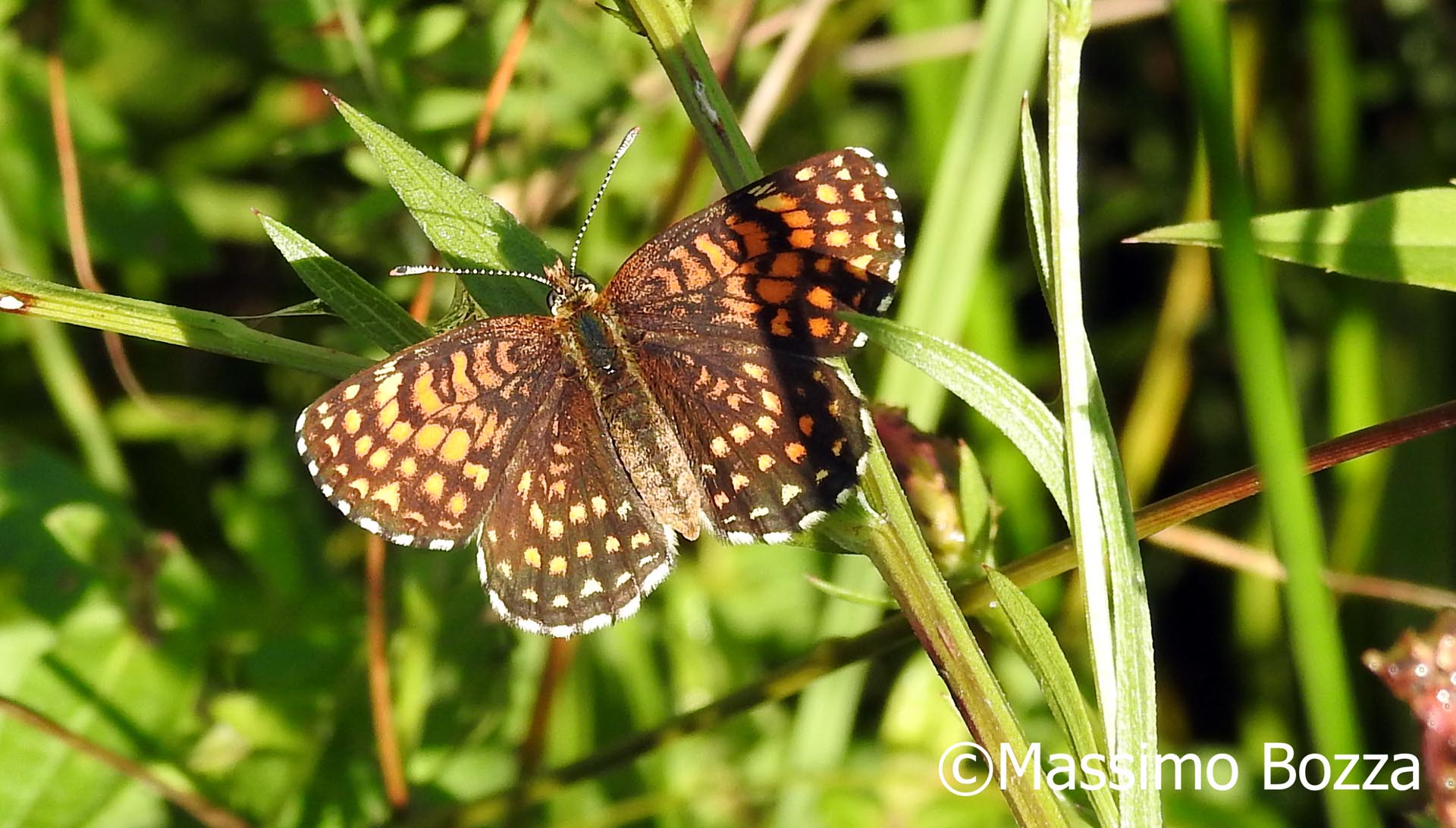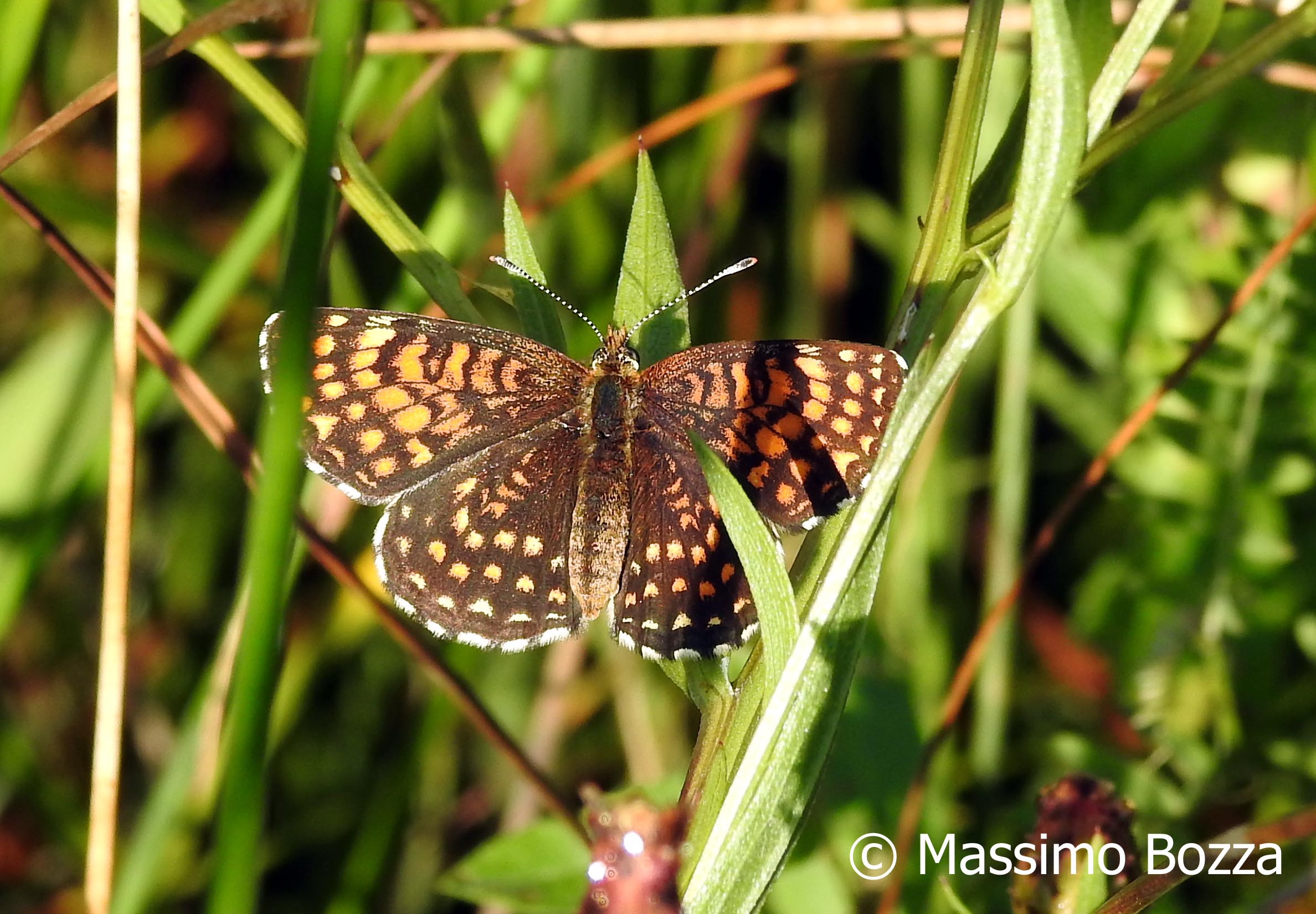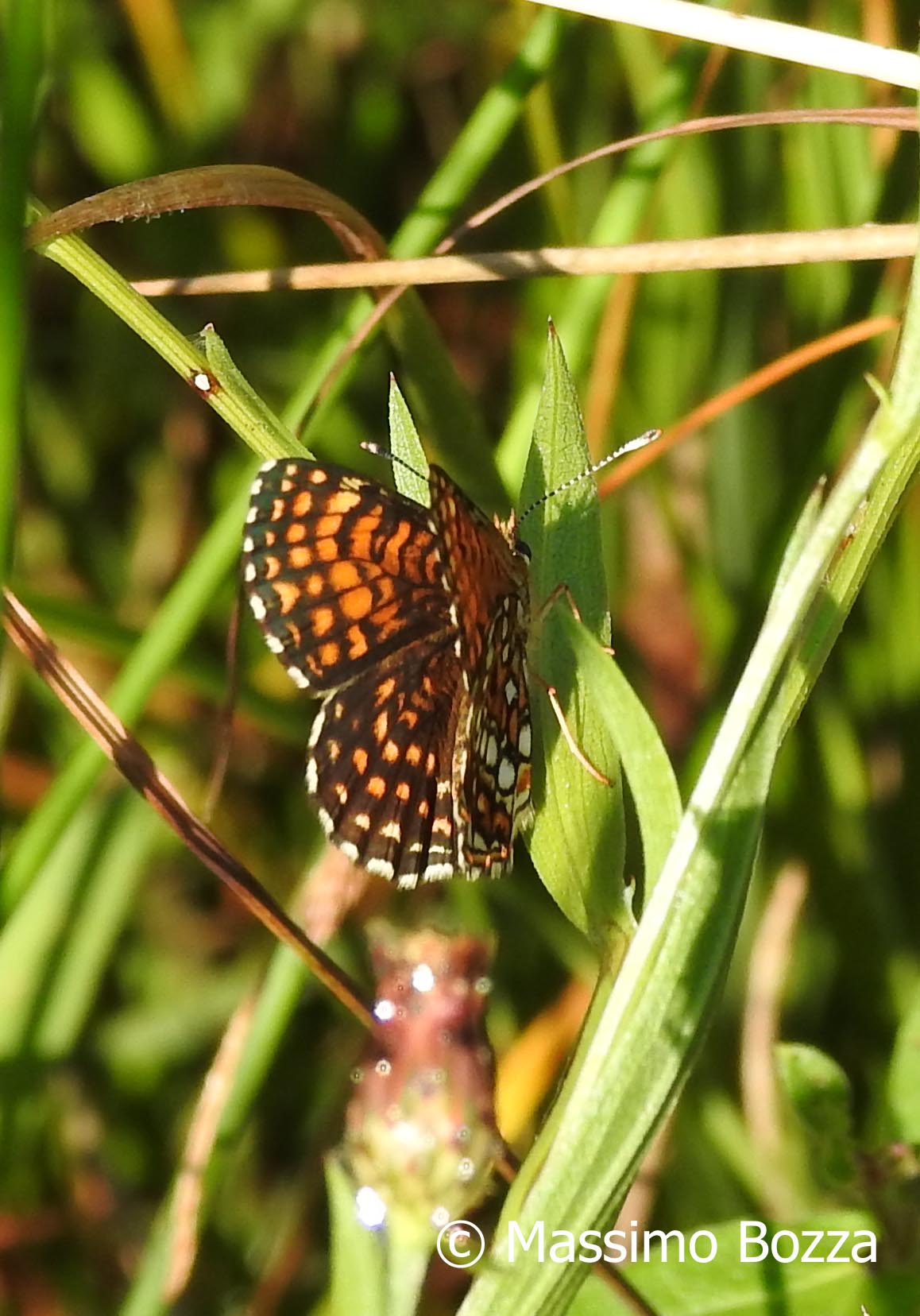Melitaea cf. britomartis
Assmann, 1847
-
 Subfamily: Melitaeinae - Melitaeini
Subfamily: Melitaeinae - Melitaeini -
 Wingspan: 36-38 mm
Wingspan: 36-38 mm -
 Flight period: May - Aug
Flight period: May - Aug -
 Spread: Rare (endangered in Italy)
Spread: Rare (endangered in Italy) -
 Host plants: Plantaginaceae - Scrophulariaceae
Host plants: Plantaginaceae - Scrophulariaceae
Information
The Melitaea britomartis also called Assmann's Fritillary is a beautiful butterfly of the Nymphalidae family with a wingspan of 36–38 mm.
Present in central-eastern Europe, in fact, it is absent from Portugal, United Kingdom France, Benelux, Denmark, Norway, Baltic countries, and Gracia. *
In Italy the species has a rather restricted range and is known only in 7 small populations, fragmented and isolated in the North East. **
Easily confused with the congener Meliataea aurelia , the identification was made in relation to the detection site (Friuli Venezia Giulia resurgence area)
where previously this species had already been sighted, and from the fact that the dark color is more regularly arranged on the upper side of the wings,
and the reddish yellow spots within this network differ less from each other in relation to size than in Meliataea aurelia
the points of the same row being usually of equal size, while in Meliataea aurelia a row contains small spots next to the large ones,
or others that disappear completely.
Another distinctive character between Melitaea britomartis and Meliataea aurelia is given by the light spot in the anal area which
it is divided in two and elongated in the first and triangular and not divided in the second. ***
However, in the specific case one can only suppose the species, and therefore the cf. remains a must .
In Italy Melitaea britomartis is a hygrophilous species, present in marshy meadows, such as those of the Friulian springs. Adults are not very mobile, rather sedentary.
The residual populations are threatened by the abandonment of mowing practices and by the conversion to cultivated fields. Recently a work has highlighted the vulnerability of the populations of
this species to meteorological anomalies (in particular anomalous rainfall which is quite frequent during the flight period). **
The larvae develop on various plants belonging to the Plantaginaceae and Scrophulariaceae families such as Plantago lanceolata and Veronica.
* Lepidoptera mundi https://lepidoptera.eu/ - Fauna Europea https://fauna-eu.org/
** Unione Internazionale per la Conservazione della Natura http://www.iucn.it/
*** Bestimmung von Schmetterlingen (Lepidoptera) und ihren Präimaginalstadien http://www.lepiforum.de/




 EN
EN ITA
ITA
Social and publications